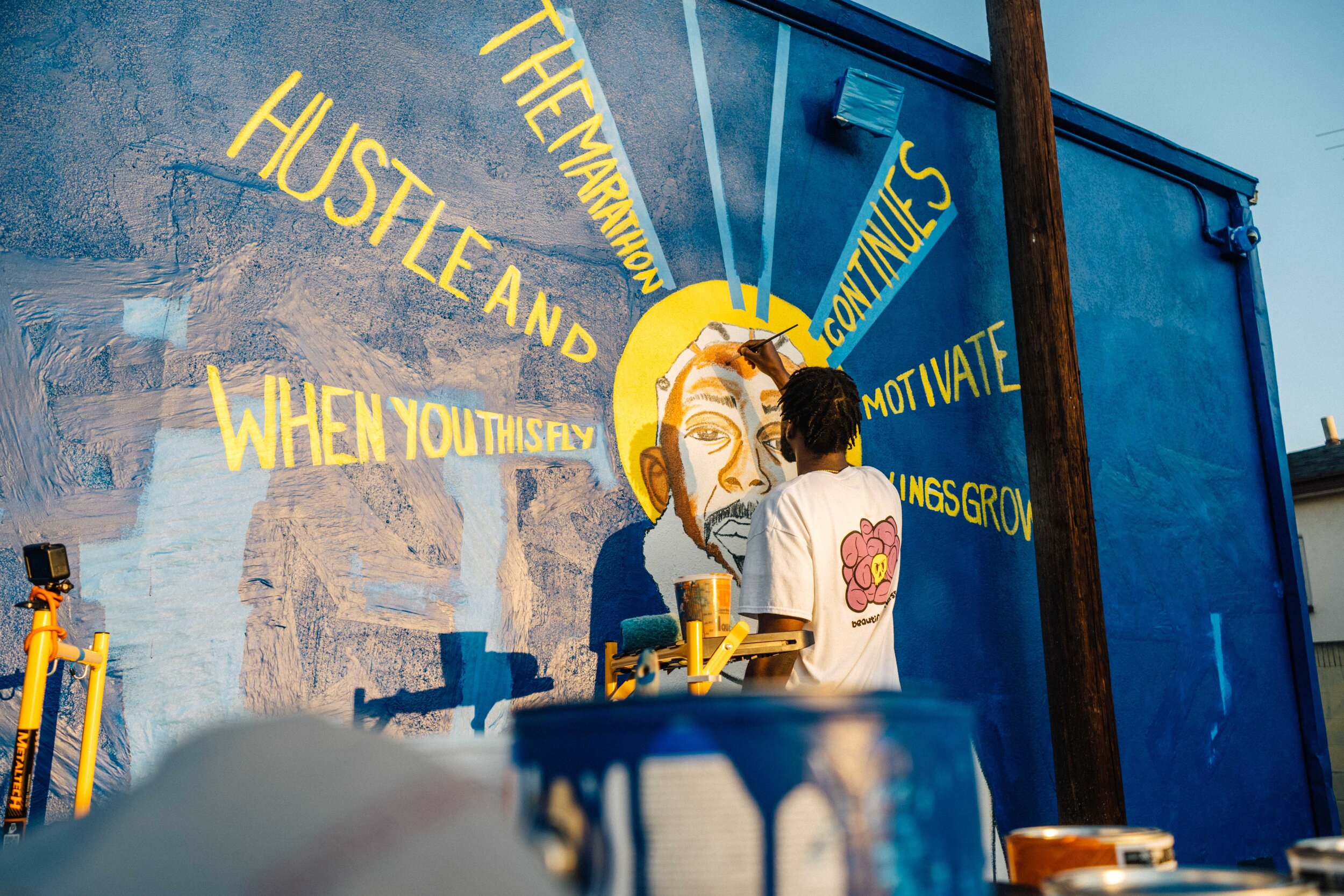SAINT NIP
Oto-Abasi aTtah and Paul Cullors work on “Saint Nip” at the Crenshaw Dairy Mart
THE “Saint Nip” MURAL PROJECT POSITIONS THE RECENTLY DECEASED ARTIST NIPSEY HUSSLE AS A SAINT WHOSE MISSION IN THE INGLEWOOD AND SOUTH CENTRAL COMMUNITY WAS IN THE REPATRIATION OF RESOURCES FOR UPLIFTING BLACK ARTISTRY. SAINT NIP WILL HENCE LIVE LONG ON THE OUTSIDE WEST-FACING WALLS OF THE SOON-TO-BE INAUGURATED COMMUNITY AND ARTIST-SPACE, CRENSHAW DAIRY MART. THE MUral created by two Black men, one from Inglewood and the other from Van Nuys. Paul Cullors a traditional street artist from Van Nuys and Oto Abasi a painter from Inglewood merge their two practices as a homage to the late Nipsey.
Care Not Cages
Care not Cages parking lot mural created by CDM team.
Co-Founder noé Olivas working on lettering and design
Photos: Phil America
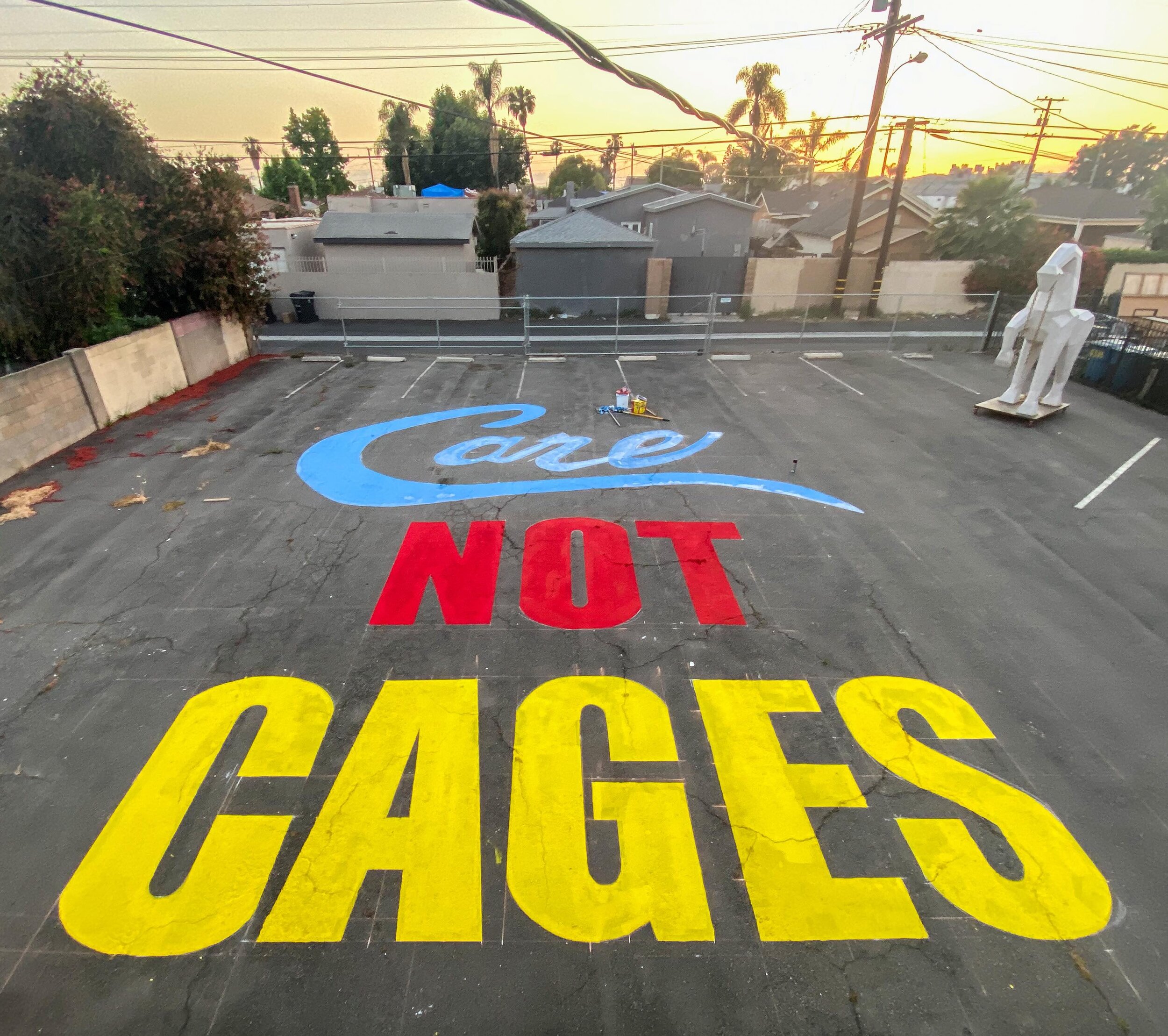
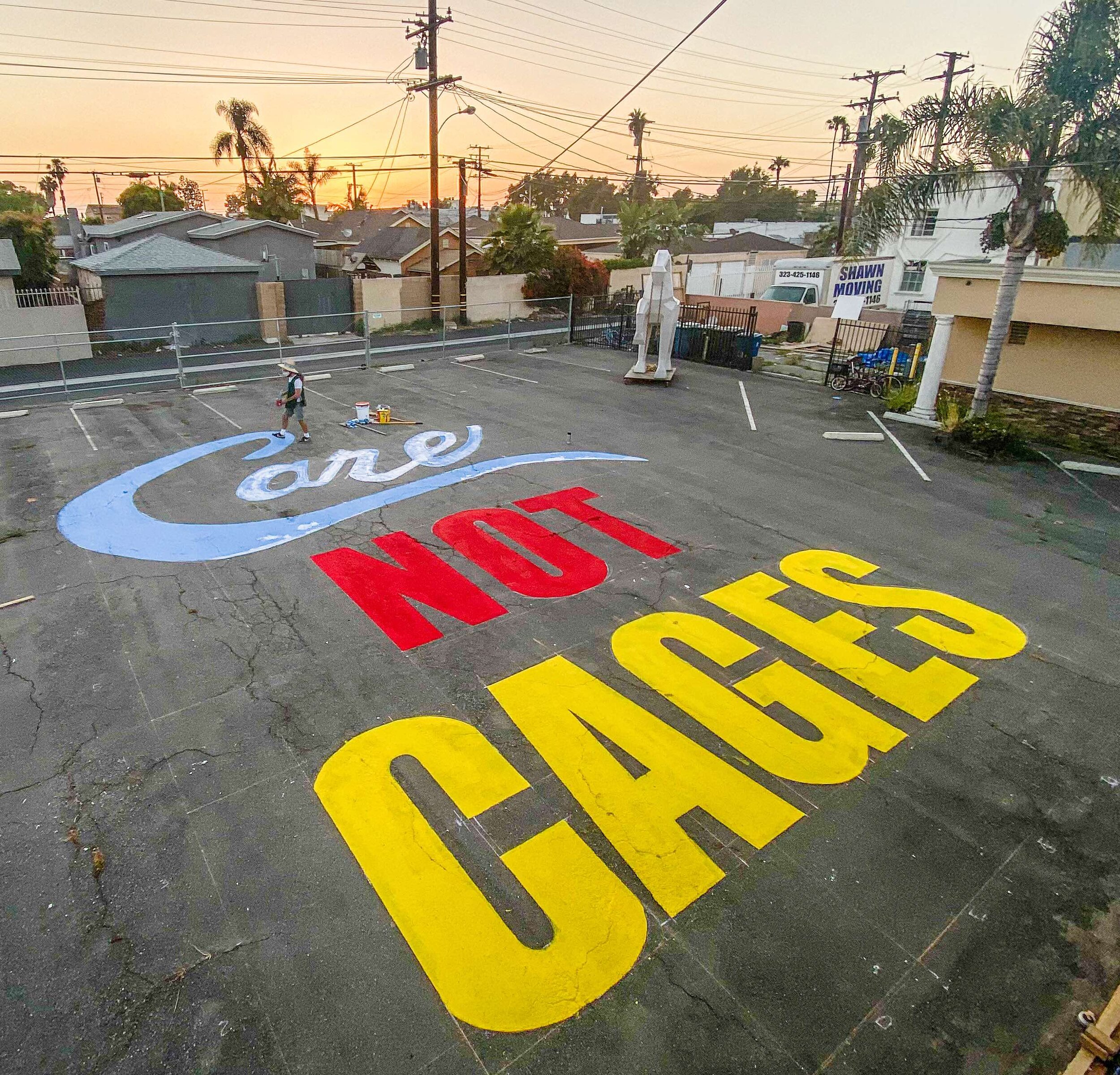
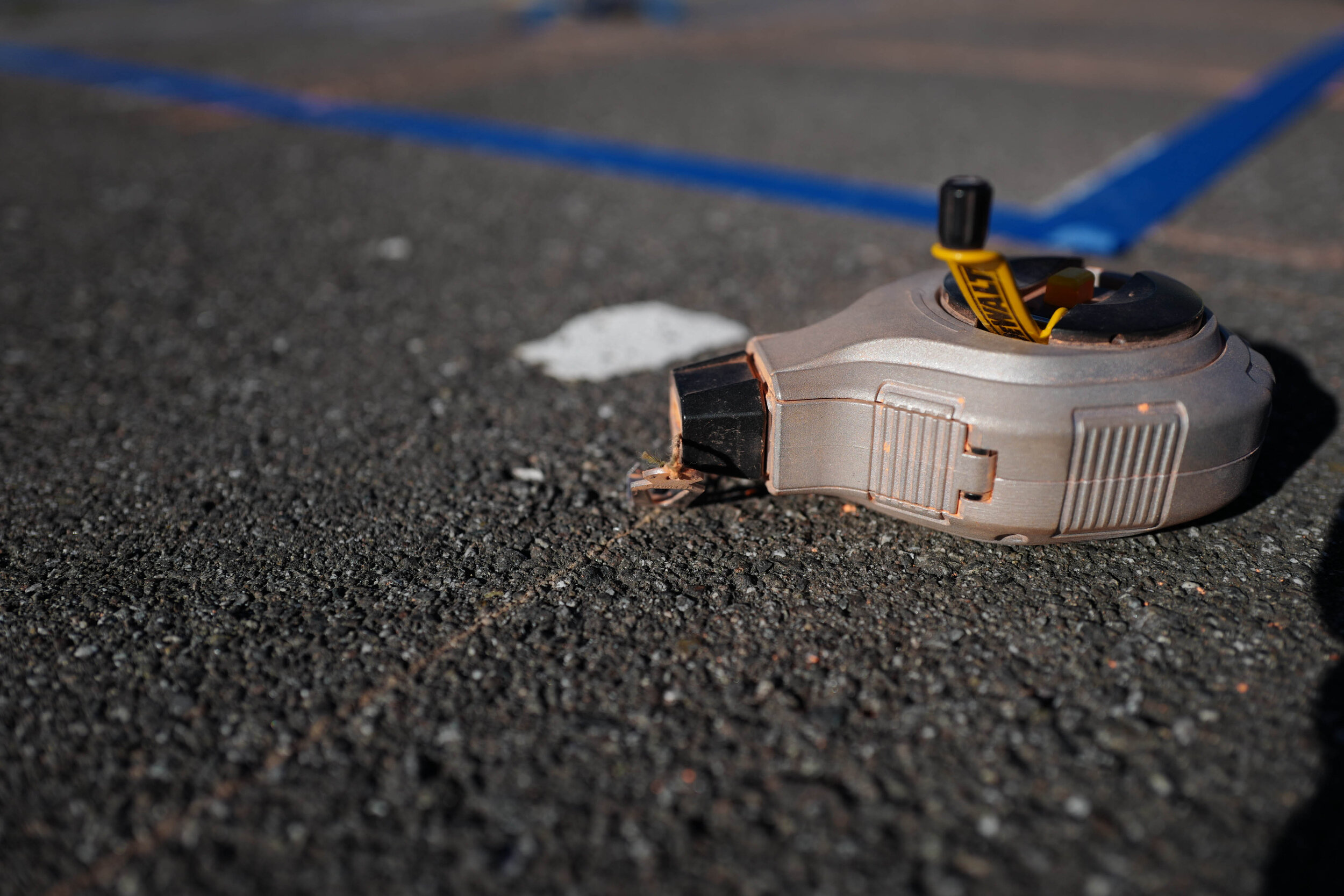
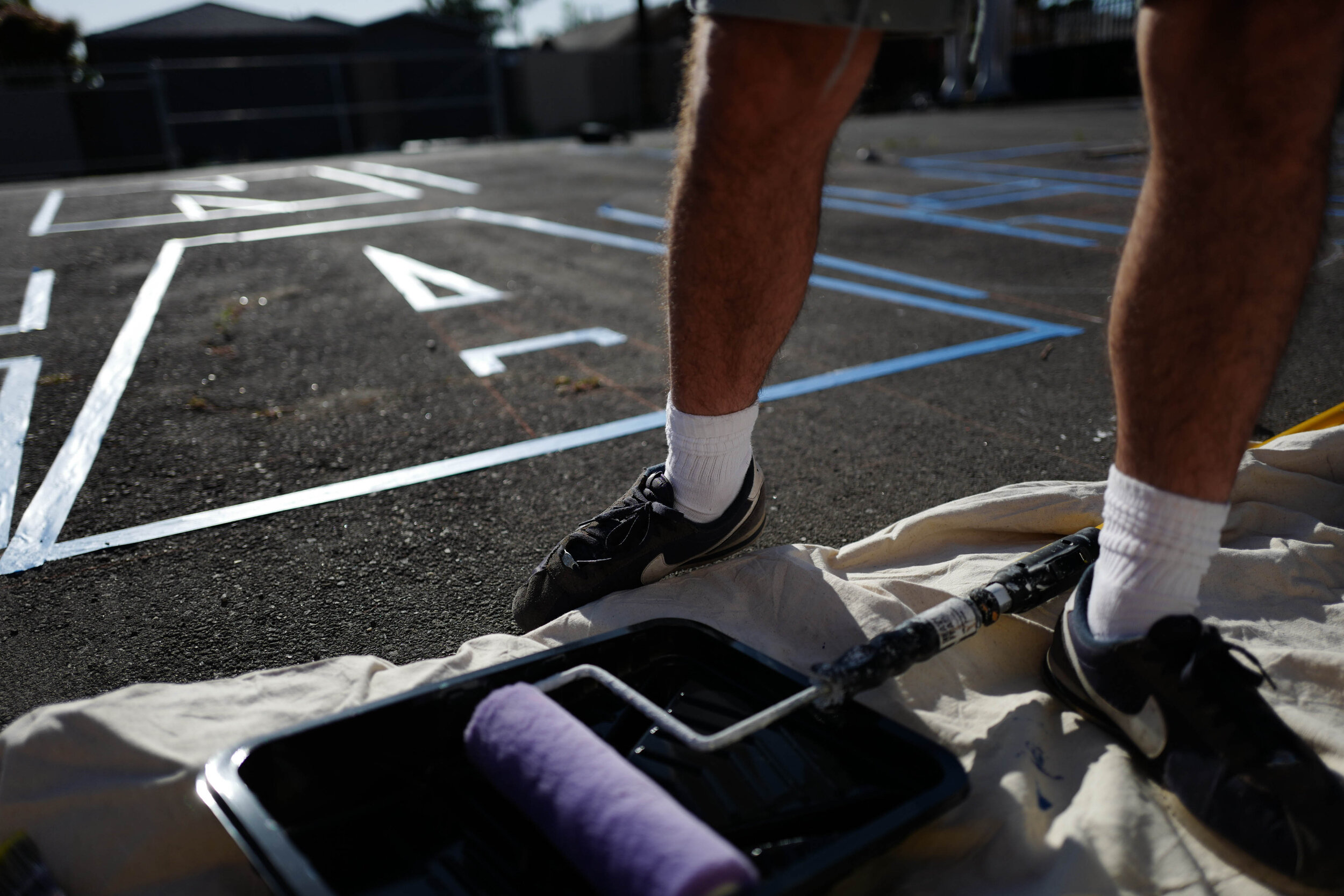
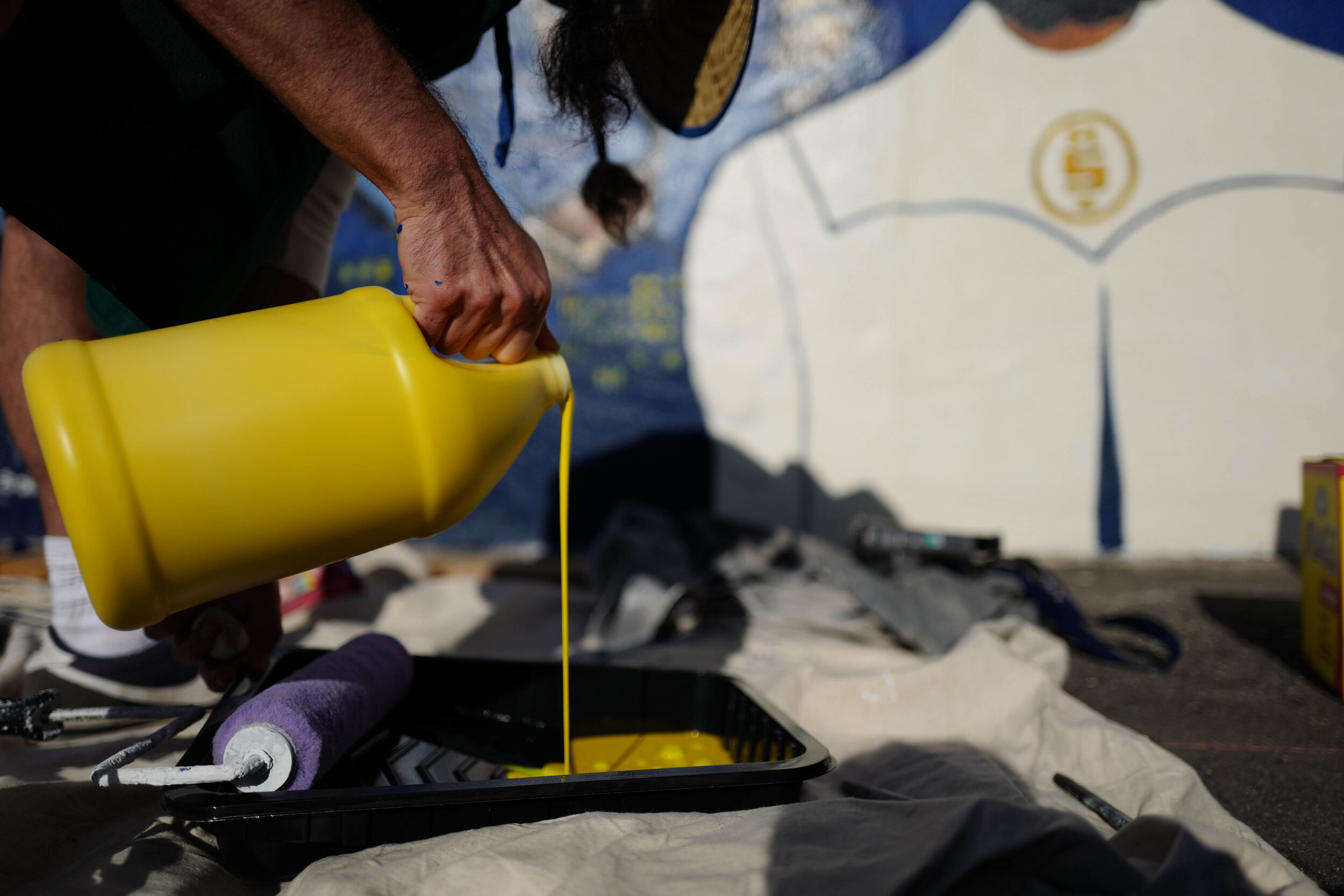
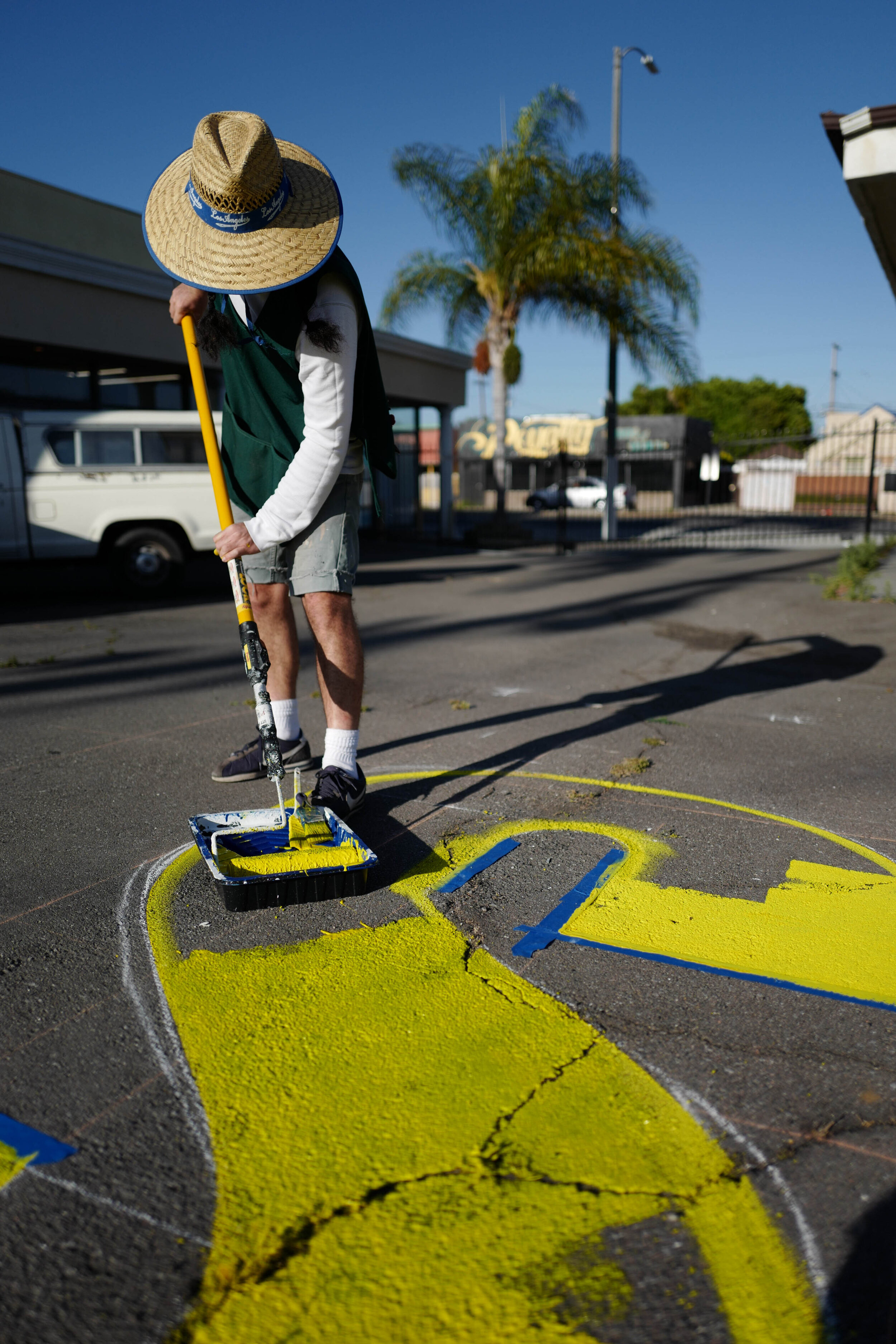
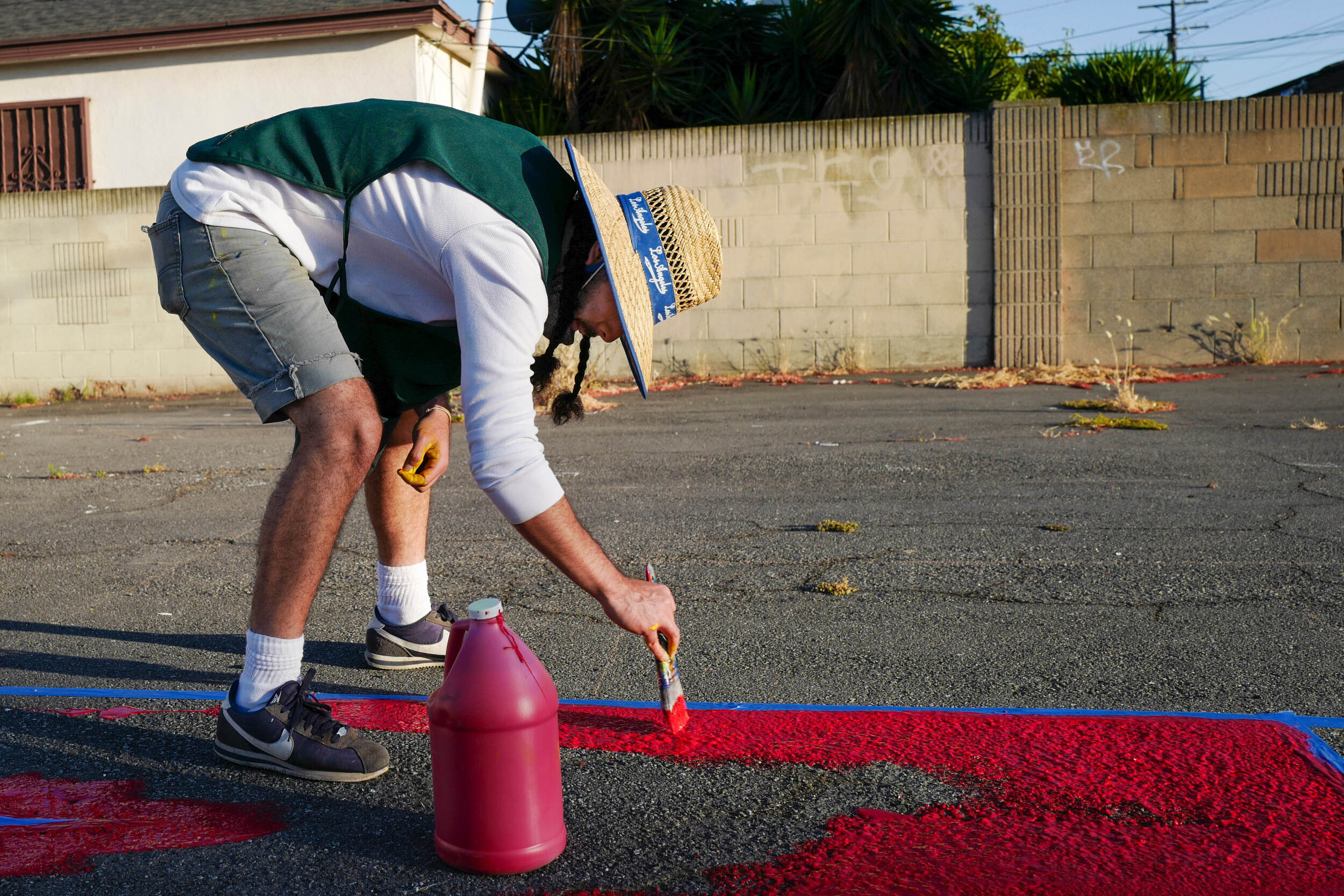
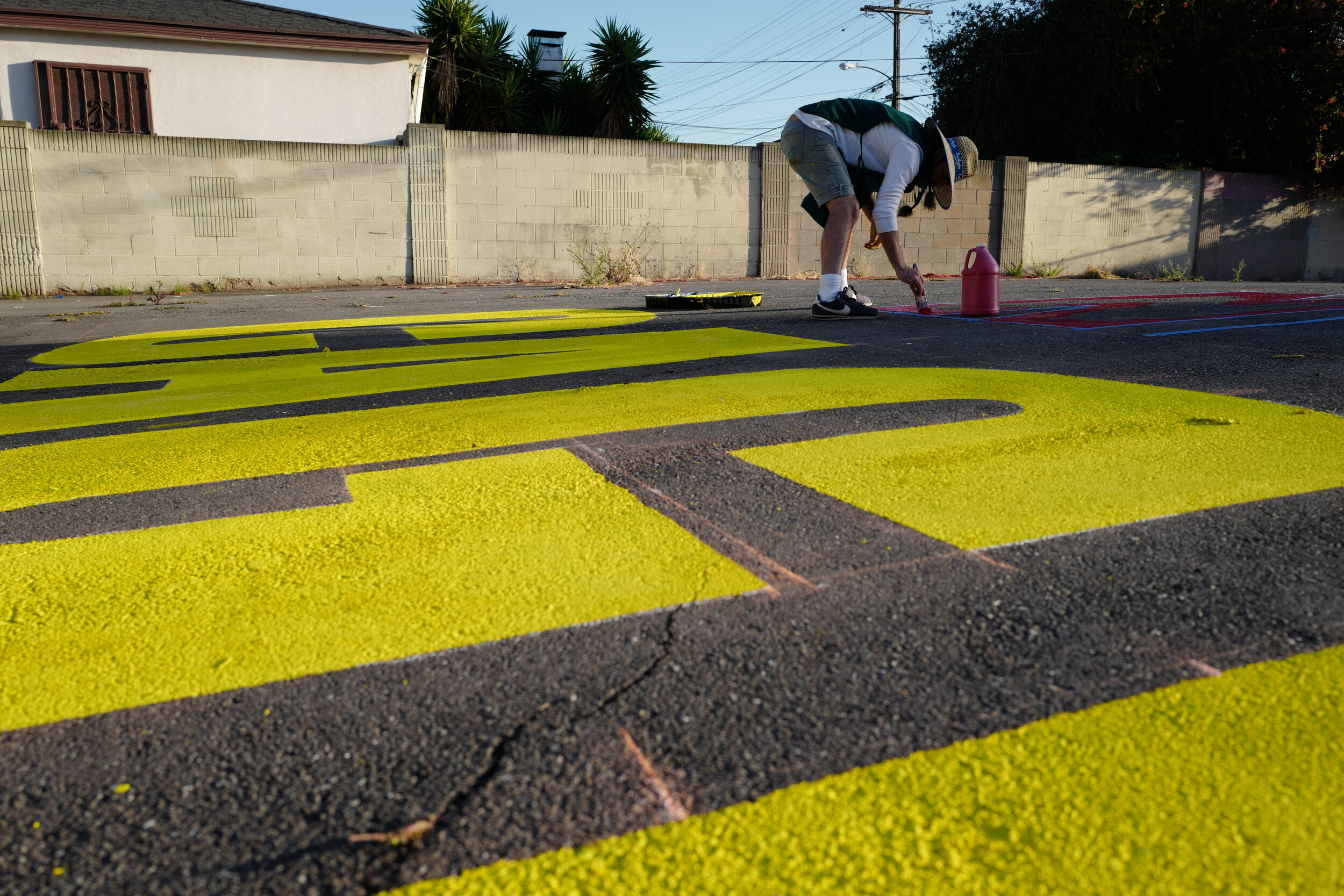
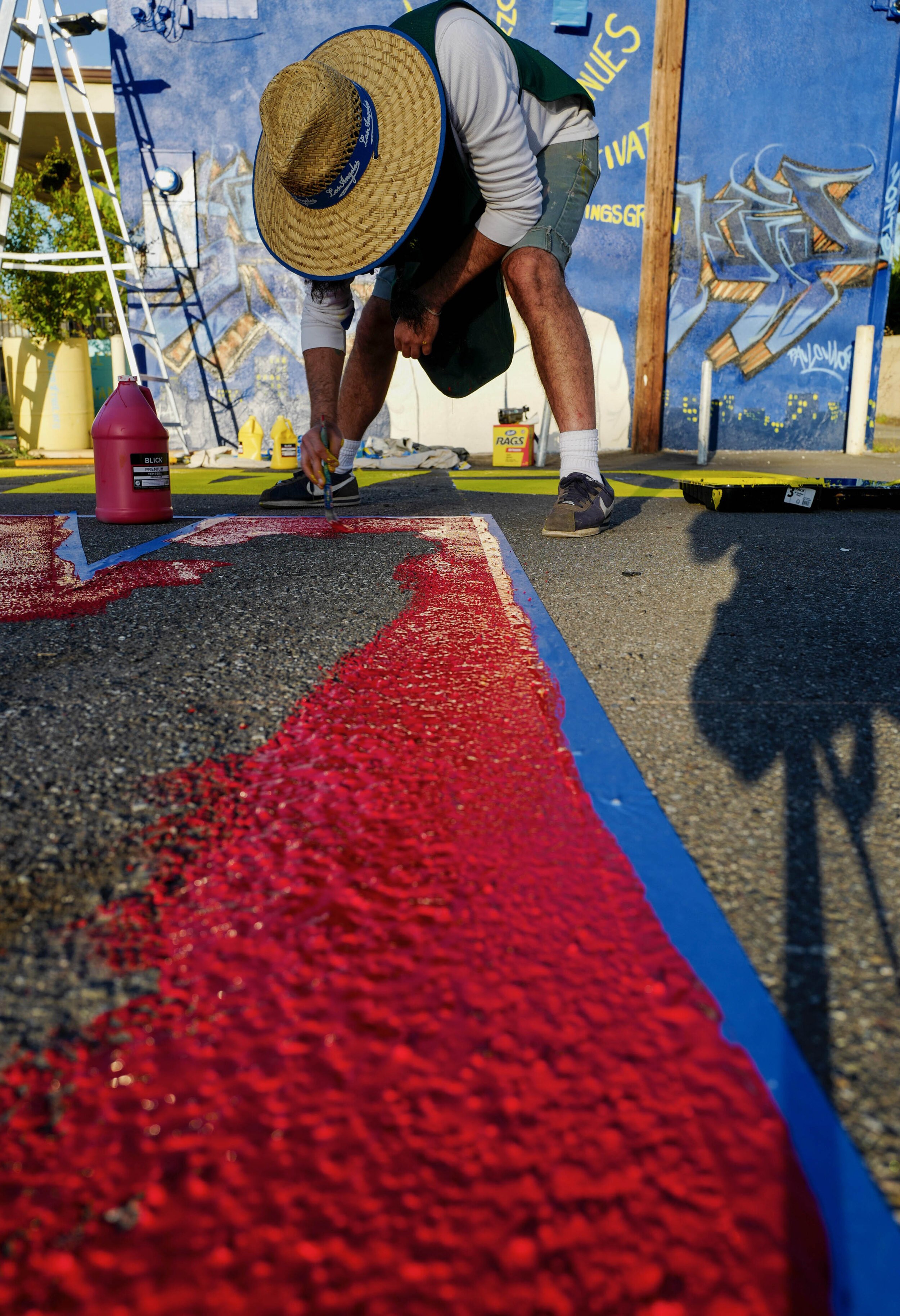
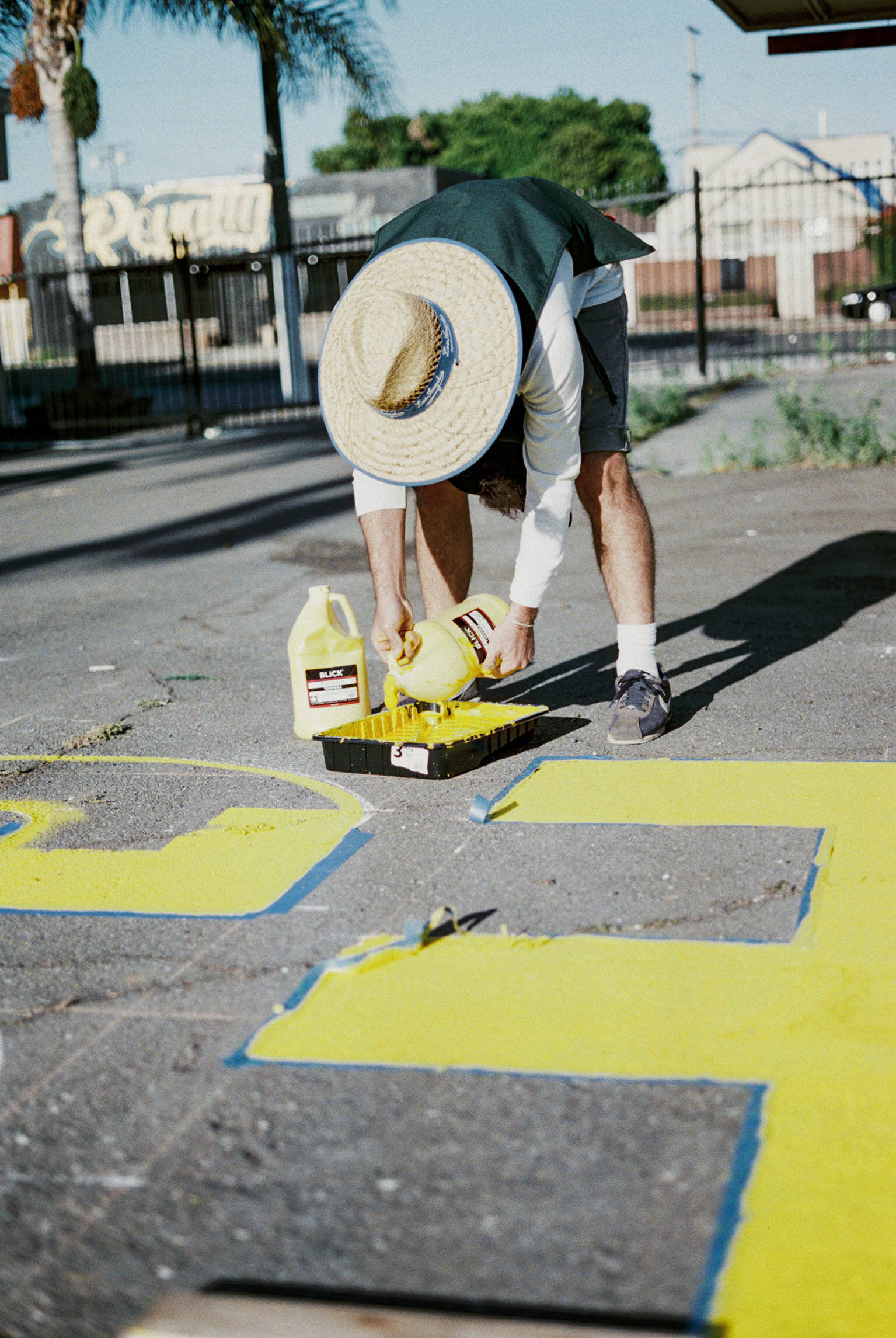
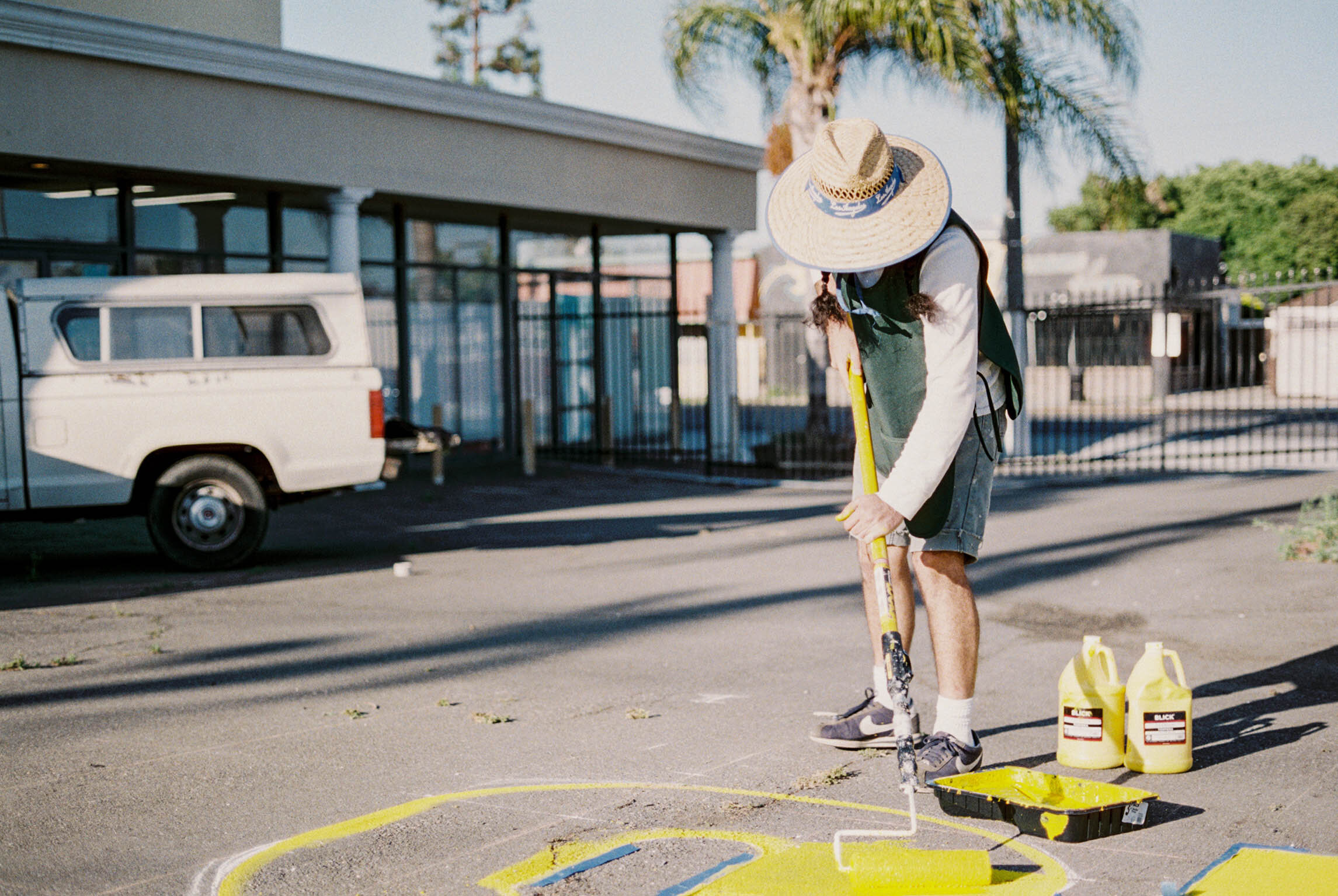
Blake the Great
The Boy and the Horse is a new three dimensional piece from the body of work, Darker Gods by Damon Davis. The work was created in conjunction with Proximity, a Trap Heals art activation.
Blake the Great he who is youth and creativity. The embodiment of brilliance, ingenuity, and creation, he comes to us as a boy filled with wonder and love. He is the god of our music, our art, our invention, pure life, and creativity. As he aged, the world of corruption attacked Blake’s being, continuously syphoning off his magic, while neglecting his heart. This forced him to survive by trading his creation for peace. In doing so, the boy grew into a tough, angry, and frightened God now known as Lord So Will It, the God of the Ghetto Children. Now that once bright, creative spirit has been beaten down to little more than a dim flickering flame, power transformed for survival.
Domingo Project
Situated in Southern California, domingo project, a.k.a. untitled space, a.k.a. rolling social sculpture, is an arts-based research, practice, and project space by artist noé olivas. It is based out of a 63 square feet 1967 Chevrolet Step-Van P30 that was used as a delivery vehicle in the ‘60s. Founded in 2011 by olivas, the project went by the title untitled space, taking into consideration how each program or project completed in the Step-Van would contribute to the titling of the artwork, projects, and experience created in the mobile gallery space. Over the years, the project space has seen itself morph into various forms, adhering to the collaborators’ and communities’ visions of the space. As untitled space, the Step-Van has gone from being a studio and gallery space to a gift shop, coffee shop, lounge space, a space for pedagogy, experimental art space, performance space, and even back to its original purpose as a delivery truck.
In the 1960s, Chevy Step-Vans came in 11 basic models, 21 different sizes, and 38 model-body combinations. The van used for domingo project was once a delivery truck, fully stocked with all the special equipment needed for storage and delivery. It was later refurbished into a living space by the time olivas acquired it. He then would go on to transform the Step-Van into an art project space, deeply inspired by Southern California custom lowrider and hotrod car culture.
olivas is a Southern California-based artist that investigates the poetics of labor through printmaking, sculpture, and performance. Since moving from San Diego to Los Angeles, olivas has been preparing to drive the Step-Van up to coast with a new name. Inspired by a found sign with the words DOMINGO (SUNDAY in Spanish), olivas began to consider Sundays not his day of rest but his day of art practice. Blending notions of labor and leisure together, domingo project speaks to the inherent labor in artmaking as well as the leisure associated with art viewing. Additionally, as Sunday is a day traditionally reserved for gathering with family, projects done within domingo on that day becomes spaces where friends, family, and people from the community can gather and share stories and experiences of art with others.
Parked beside the Crenshaw Dairy Mart (CDM) as of April 2020, domingo is driven by the same values and political concerns of CDM. Founded in 2019 by artists Patrisse Khan-Cullors, Alexandre Dorriz, and noé olivas, CDM emerges from an investment in abolition, modes of accessibility in art practice, and weaving community solidarity through new memories. It is home to an artist collective and art gallery dedicated to shifting the trauma-induced conditions of poverty and economic injustice, bridging cultural work and advocacy, and investigating ancestries through the lens of Inglewood and its community. Originally built in the 1960s as well, CDM maintains the aesthetics of the period. Their connection with labor and commerce, as CDM was once a neighborhood convenience store and domingo was a delivery van, is recognized with every project put together in either space.
Recently graduated from the University of Southern California (USC), olivas teamed up with Ana Briz, researcher, writer, and curator, on developing and organizing artist projects for domingo within the Los Angeles area. Partnering with the City of Los Angeles’ Department of Cultural Affairs (DCA) is an opportunity to be in conversation, to share resources and strategies, and to support emerging Los Angeles artists of color. domingo strongly believes that talking together is one way to make community. As a mobile art space, its ability to go from location to location allows domingo to reach a wide arrange of audiences to engage in discussion. By enabling conversations, we encourage necessary and transformative exchanges to take place. As part of domingo’s investment in community solidarity and arts advocacy, the projects put forward consist of primarily community-based initiatives. Currently, domingo is organizing an exhibition and project with artist and arts educator Dulce Soledad Ibarra titled Ninth to Olympic. Situated in the Party/Piñata/Toy District, Ibarra will be inviting the Los Angeles art community to participate in and support local businesses that are in danger of being displaced. Inside the Step-Van, Ibarra will be making drawings and prints out of purchased piñatas by attendees. The artworks will later be exhibited in a gallery for Ibarra’s MFA thesis exhibition at USC in May 2020.


